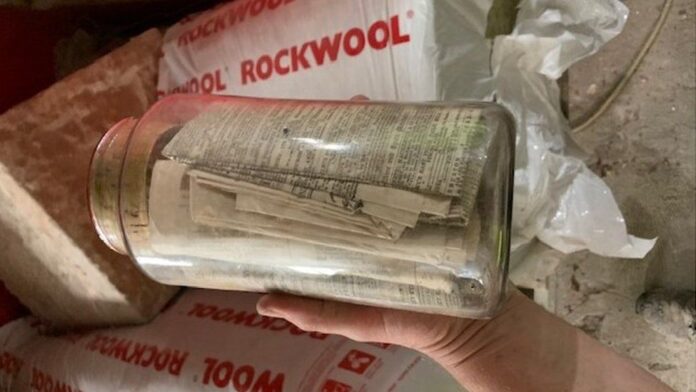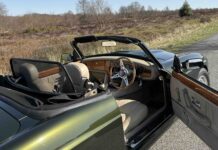A Turner painting which has not been exhibited for nearly 200 years is just one of many objects that can be seen at attractions across the UK for the first time this summer, thanks to support from National Lottery players.
Other items include a 3000-year-old bronze sword, the red shirt worn by explorer David Livingstone when he was found, a mysterious Jurassic crocodile and one of Britain’s most famous seaside posters.
In the 2020/21 financial year, the Heritage Fund invested more than £400m cash into the heritage sector, helping more than 1,500 heritage organisations and enabling hundreds to reopen this summer. Support continued for ongoing projects and emergency support was provided at speed during the crisis to help heritage recover and reopen. The Fund also delivered the Culture Recovery Fund for Heritage on behalf of Government, in partnership with Historic England.
Items on display for the first time this summer include:
A Turner watercolour of Malmesbury Abbey, purchased by Athelstan Museum, Malmesbury after receiving a grant of £380,900 from the National Lottery Heritage Fund. It has been in private hands for the last 40 years and hasn’t been publicly exhibited since 1833. Turner first saw and sketched the Abbey in his youth in the 1790’s and he completed the watercolour in 1827.
A rare 3000-year-old Bronze Age Sword on display for the first time in the Fermanagh County Museum in Enniskillen Castle, near where it was found. This very fine example from the Late Bronze Age (around 1000 to 600BC) is in good condition, with a two-edged blade meant to be used in a slashing manner. The sword was discovered in 1952 by the side of Lough Erne near Riverside, Enniskillen, and has been in private ownership ever since. Spotted in a Dublin auction catalogue, a group got together to purchase it and bring it back home. The acquisition was supported through a grant scheme run by Lough Erne Landscape Partnership, which receives funding from the Heritage Fund.
The red shirt that David Livingstone was wearing when journalist Henry Morton Stanley found him after he had been missing for years in Africa is on display for the first time in the David Livingstone Birthplace Museum, South Lanarkshire. The Museum reopened on 28 July after a £9.1m regeneration project supported by the Heritage Fund and others.
A mysterious Jurassic crocodile is on display for the first time as the culmination of a digitally enabled walk alongside Bath Royal’s summer exhibition. This 160-million-year-old fossil, from the teleosaurid crocodyliform family, was prepared in 2014 using modern laboratory techniques, removing more rock and exposing the teeth and palatal bones. Some features of the skull are unique and palaeontologists consider it to be a new and yet undescribed species. Captain McNair, a Victorian railway engineer, found it during the construction of the Wiltshire, Somerset, and Weymouth Railway. The crocodile is one of four key objects on their new digital app, currently being promoted by the Bath Royal, supported by the Heritage Fund with a grant of £90,800.
The diary of a 19th Century weaver and musician is on show for the first time at Craven Museum and Gallery, Skipton. Richard Ryley lived in Barnoldswick in the West Riding of Yorkshire and his diary, rediscovered in 2018, is a rare insight into day-to-day life for the working classes in the 1800s. Beginning in January 1862, it spans the most severe part of the ‘Cotton Famine’ caused by the American Civil War and ends in June 1864 only a few months before his death from it, aged 43. The museum and gallery has opened its doors after a two-year closure for a major £2.7m capital redesign project funded by the Heritage Fund and Craven District Council.
The original Jolly Fisherman painting which led to one of the most iconic seaside posters of all time is now on permanent display at the new Tower Pavilion, Skegness following a Heritage Fund grant of £4000 to restore it. The poster and its accompanying slogan ‘Skegness is SO Bracing’ is probably the most famous holiday advertisement ever drawn. It has been circulated hundreds of times in almost every newspaper in the land, and the dancing salt has been imitated by thousands of visitors. John Hassall, one of the great poster artists, received twelve guineas from the Great Northern Railway Company to paint it in 1908.
Time capsule, Manchester Jewish Museum. Last year construction began on Manchester Jewish Museum to add a multi-million-pound extension alongside complete renovation of their historic synagogue. During construction the builders found a glass time capsule deep in a wall cavity near the synagogue’s Ark (the holy cupboard in which the Torah scrolls are stored). Sealed with wax, the capsule dates back to the synagogue’s foundation in 1873 and is filled with coins, newspapers and synagogue documents. The capsule is yet to be opened and the museum will work with paper conservators to safely open the capsule later this year. It can be seen in the window of the museum’s brand-new Collection Store.
One of the earliest known examples of an easy chair at the Museum of the Home, London, which reopened in June after a three-year refurbishment supported by the Heritage Fund. Made in England between c.1720 and 40, the walnut wing chair with original stamped wool upholstery is an exceptional and rare example of early upholstery. The chair, which has never been on display before because it was too delicate, shows how the idea of comfort has changed through time.
Quirky objects are also going on display for the first time in many museums and galleries, including a small ceramic egg found in a wall at 17th century Mynachlog Fawr house and farm, Ceredigion, mid-Wales, possibly buried there to protect the house from evil and a mysterious Victorian man made from a crayfish at The Whitaker Museum, Rossendale, about which little is known.
Ros Kerslake, Chief Executive, National Lottery Heritage Fund, said: “These are just some of the fascinating heritage objects that people are able to see this summer, thanks to the support of National Lottery players. As venues reopen I am pleased that the Heritage Fund has enabled these new discoveries to see the light of day.”







